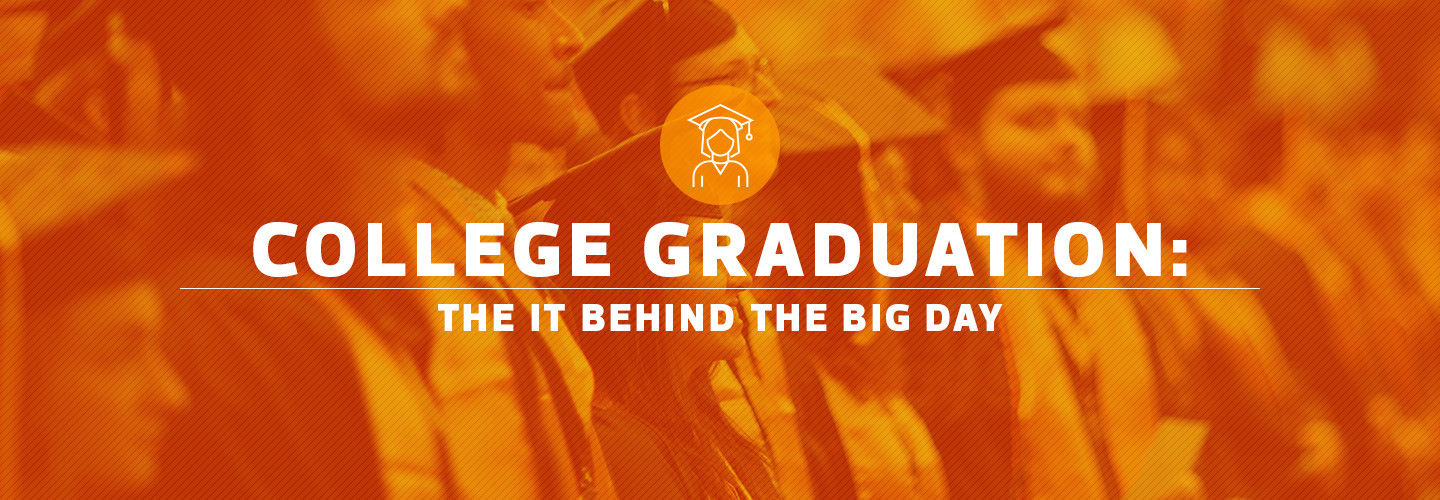The biggest tech challenge? Providing enough Wi-Fi for proud parents and other family members in attendance. That meant bringing in additional Cisco 3802 and Cisco 3702 access points, says Davide Gaetano, CTO and executive director of infrastructure engineering at KSU.
“The Convocation Center is a very high-density environment,” says Gaetano. “We added a large number of APs to cover it.”
The tricky part was covering the large, open space in the center where the graduates sit, he adds. The solution Gaetano’s team came up with was to connect hardwired APs to bleachers and lay the cable so that it unspooled as the bleachers were extended.
But the goal wasn’t to blanket the arena with Wi-Fi coverage for the entire 75-minute ceremony, says Joe Skopitz, director of operations for event and venue management.
“A lot of attendees are using their phones to capture photos and video,” he adds. “If we’re able to handle 1,000 concurrent users, I would consider that a success.”
For IT Staff, Event Planning Calls for Preparation and Problem-Solving
At smaller schools, the issues are very much the same.
Iowa Wesleyan University graduates approximately 100 students each December and May from an enrollment of just over 600. The small liberal arts college in Mount Pleasant, Iowa, streams each ceremony live to the web from the campus’s Ruble Arena, says Meg Richtman, vice president for strategic initiatives.
Davidson College, a liberal arts school just north of Charlotte, N.C., is a small college with a big ceremony — or, rather, two of them.
Thanks to North Carolina’s notoriously volatile summer weather, the 1,843-student school has to plan for two ceremonies: one outdoors under the stately 100-year-old oak trees on Davidson’s historic front lawn, the other inside its 5,700-seat sports arena, says Technical Director Jim Nash.
The ceremony is also streamed to the Davidson website and the 600-seat Duke Family Performance Hall on campus.
Aside from summer storms, the biggest challenge has been having sufficient bandwidth to carry the ceremonies live, says Nash, who’s been managing the technology for 18 years.
“The first year we did this, the college hadn’t purchased enough streaming service,” he says. “We held the ceremony under the oaks, the wind was blowing the branches around, and all that movement made the video blotchy. Every year I meet with our technology and innovation team to make sure our pipeline is big enough to get the stream out.”
Despite graduating 400 to 500 students each spring, Davidson’s ceremonies attract up to 6,000 people, many of them area residents who’ve been coming to the festivities for years. To accommodate the huge number of campus visitors that day, the IT department bumps up guest Wi-Fi bandwidth from 140 megabits per second to 1,400Mbps, says Director of Media Relations Jay Pfeifer.
Even then, adds Nash, many people sitting in the audience are watching the video on their phones via the cellular network.
Despite nearly two decades of racing to prepare two large ceremonies at the same time, Nash says it’s still an emotional experience for him.
“I look around at the institution I love, seeing the graduates walk away with their families and old friendships rekindled, and I end up crying,” he says. “It’s a very magical, special time.”








